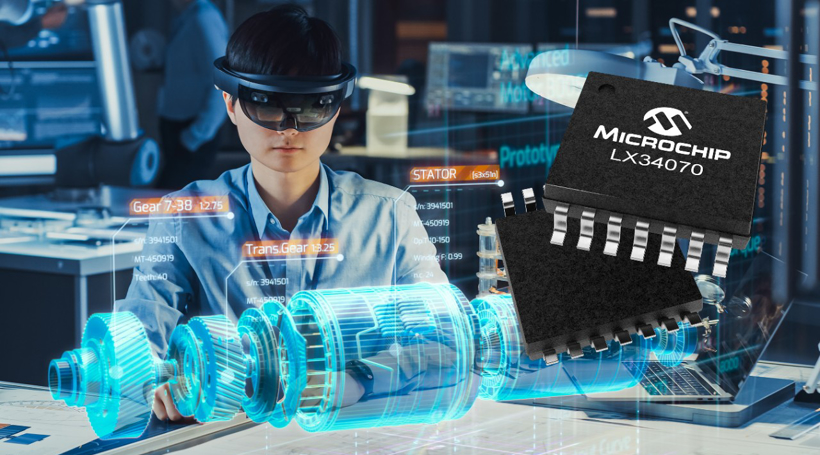Microchip introduces new inductive position sensor designed for EV motor control applications
Developers of motor control systems are actively replacing Hall-effect position sensors and older magnetic resolver solutions with inductive alternatives to avoid expensive magnets and other heavy transformer-based structures, while inductive products can be integrated into simple, compact printed circuit board (PCB). Microchip Technology Inc. announced the launch of the LX34070 IC designed for EV motor control applications, extending a broad line of inductive position sensors to the EV motor control market,media reported.

Image source: Microchip Technology Corporation
"The LX34070 inductive position sensor enables lighter, smaller, more reliable motor control solutions that meet stringent safety requirements, lower overall system cost, and Can operate seamlessly and precisely in the noisy environments of automotive DC motors, high currents and solenoids. Designers can combine the LX34070 with other functional safety-ready microchip devices including our 8-bit AVR® and PIC® microcontrollers controller, 32-bit microcontroller and dsPIC® digital signal controller) to further simplify EV motor control designs.”
The LX34070 inductive position sensor solution offers numerous advantages over magnetic resolvers and linear voltage differential sensors (LVDTs). In addition to lower cost, the LX34070 offers significant size and mass reduction by using PCB traces instead of transformer-based magnetic winding and coil structures. Since the LX34070 is independent of magnet strength, it improves accuracy and improves robustness by actively suppressing stray magnetic fields. With features like the above, designers gain more flexibility to place the thin and light PCB-based LX34070 solution in their EV motor control designs.
A PCB-based inductive position sensor uses a primary coil to generate an AC magnetic field coupled to two secondary coils. A small metallic target object interferes with the magnetic field, causing each secondary coil to receive a different voltage, the ratio of which is often used to calculate absolute position. Using these technologies, Microchip introduced its first high-volume inductive sensor for automotive and industrial applications more than a decade ago, and has many volume production plans. Today, the LX34070 offers the same proven PCB materials, methods, and simplified low-cost packaging for EV motor control and other applications that require its high-speed and low-latency benefits.



























 XINDA
XINDA